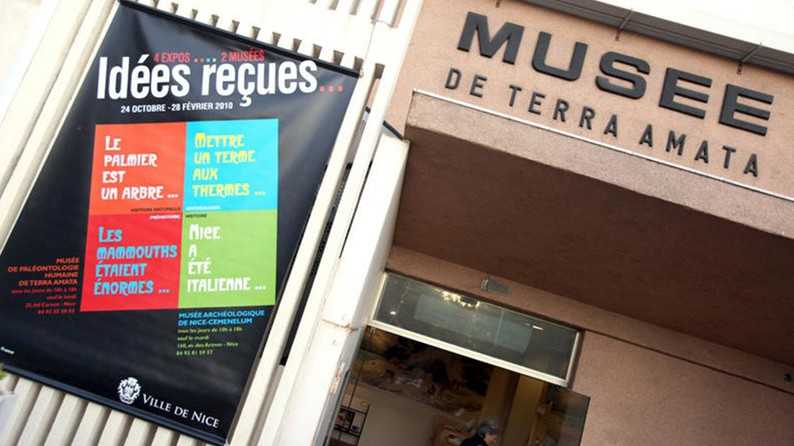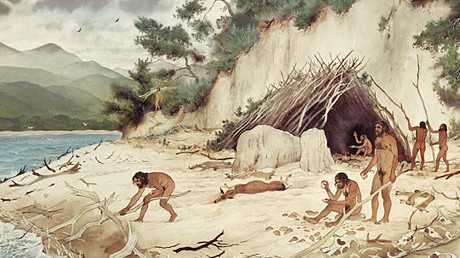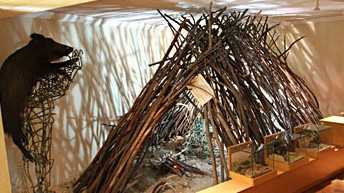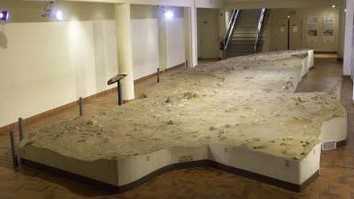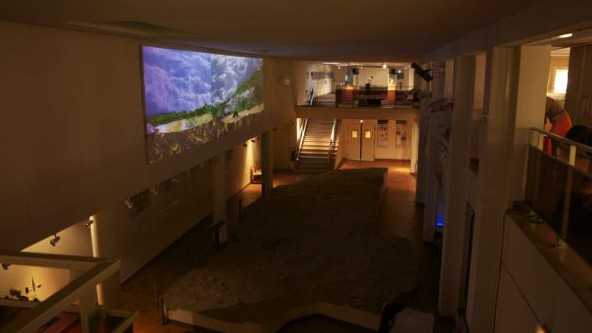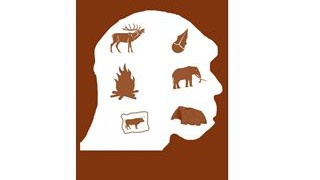2016 marks the 50th anniversary of the Terra Amata excavation and the 40th anniversary of the
anniversary of the opening of the Museum of Archaeology to the public by the
City of Nice. To celebrate this double anniversary,
the museum closed
several months its doors and will offer a museography at the beginning of the year
updated incorporating the latest discoveries and offering
visitors a new interactive and playful route. This news
presentation will expose the lives of the first Niçois in their
environment, as well as humanity's first great revolution:
domestication of fire.
The Terra Amata Museum of Human Paleontology provides a playful and didactic discovery of the behaviour and way of life of the first Niçois.
The climate was warmer than it is today. In the summer, they set up their hut on the beach, at the bottom of a creek, near a spring. They hunted elephants, deer and rabbits. Their tools, choppers, axes or bifaces were essentially made from the pebbles collected on the beach... A footprint remains the only direct testimony of the Homo erectus of Terra Amata, these men of 400,000 years ago.
Practical info
Free entry
Open on Mondays only for groups by reservation.
Closed on Tuesdays, and certain public holidays (January 1, Easter Sunday, May 1 and December 25).
Open every other day from 10 a.m. to 6 p.m.
Signage guides people with reduced mobility to a suitable entrance (videophone).
Guided tours
Price of the visit:6
Welcome groups by appointment on weekdays (call to book):
School groups: free for all schools in Nice, 20 euros for those outside Nice
Adult groups: $82 (package for 16 to 35 people)
Visitation time: 1 hour to 2 hours
The terramatasite, dedicated to prehistory, has delivered the oldest homes in human history, dating back 400,000 years.
It is located on the territory of the commune of Nice, on the western slope of Mount Boron. The homes unearthed in Terra Amata bear witness to the beginnings of man's domestication of fire. The Achelean industry is particularly rich. The interdisciplinary study of the Terra Amata site, led by Professor Henry de Lumley, shows that this deposit is an important milestone for the understanding of paleoclimates and paleobiodiversity in the Mediterranean South.
Open on sunday

 StayHostel, ...
StayHostel, ... VisitMuseums, ...
VisitMuseums, ... Go outRestaurants, ...
Go outRestaurants, ... ShopsFashion, ...
ShopsFashion, ... LeisuresBeaches, sports, ...
LeisuresBeaches, sports, ... ServicesTourism, ...
ServicesTourism, ...



